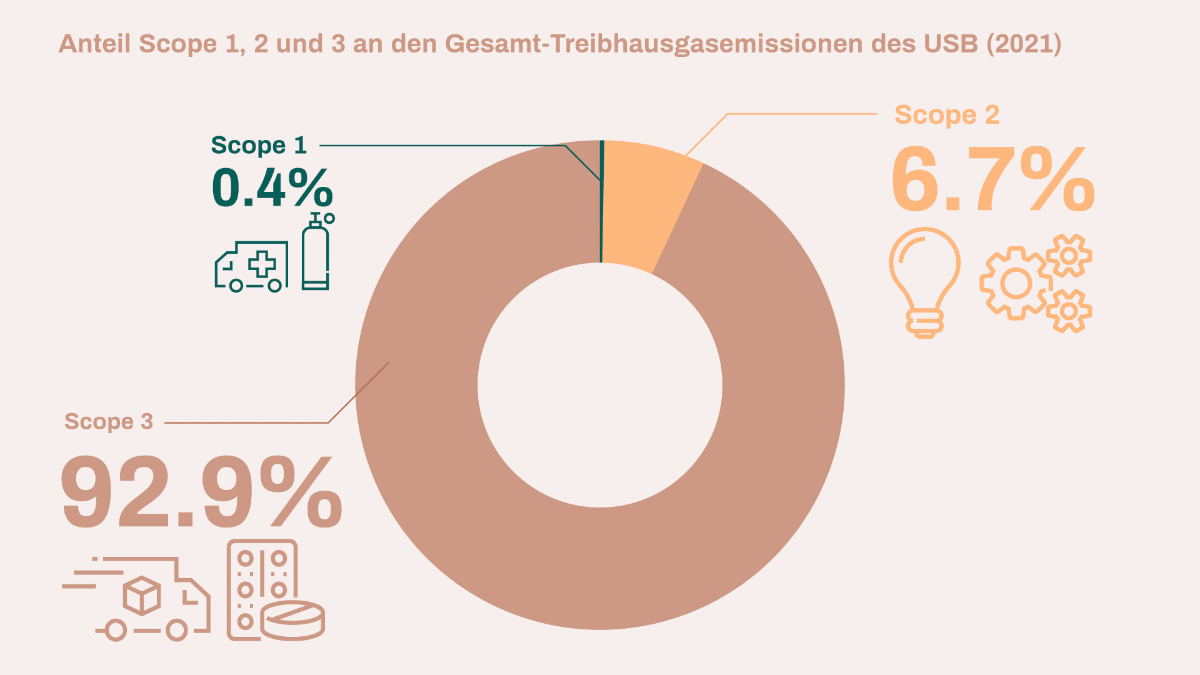
Greenhouse gas balance
Climate change is caused by man-made greenhouse gas emissions. Rising temperatures and an increase in extreme weather events are increasingly affecting the environment and human health.
The greenhouse gas balance sheet makes it clear: the USB produces almost 65,000 tons ofCO2 per year. That is the same amount of emissions as driving around the world almost 5,000 times in a car.
The vast majority of these are indirect emissions generated along the value chain (Scope 3, see figure). More than half are caused by the production of purchased goods such as medicines and medical products. Catering for patients and employees and employee commuting also account for a significant proportion of indirect emissions at the USB.
The remaining - much smaller - share is made up of energy-related emissions for heat and electricity (Scope 2, see figure) as well as emissions caused directly at the USB, for example by anaesthetic gases or the fuel consumption of USB vehicles (Scope 1, see figure).
The USB is now taking further measures based on this greenhouse gas balance sheet: For 2023, vegetarian and vegan catering will be expanded at the USB and a mobility concept for employees will be developed. The aim of the USB is to reduce greenhouse gas emissions from Scope 2 and 3 by ten percent by the end of 2025 compared to 2021.
The USB has already taken measures to reduce its greenhouse gas emissions in the past. For example, the use of the climate-damaging anaesthetic gas desflurane was completely discontinued in 2021.

Scope 1: direkt am USB verursachte Emissionen wie Anästhesiegase
Scope 2: indirekte Emissionen aus eingekaufter Energie, die am USB verbraucht wird
Scope 3: indirekte Emissionen, die entlang der Wertschöpfungskette entstehen, wie z. B. bei der Produktion eingekaufter Waren und Dienstleistungen
